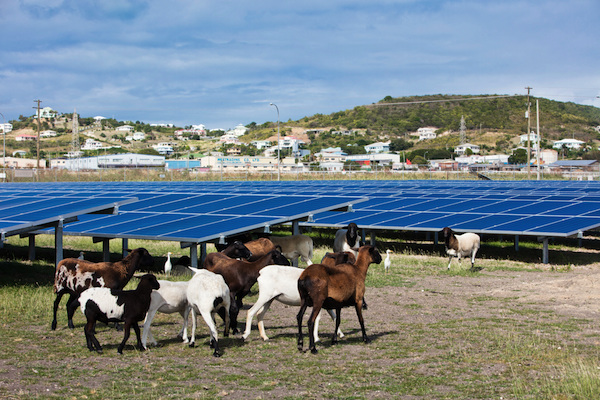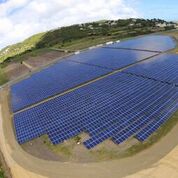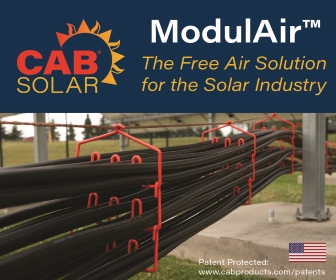Robust Solar Energy Plants for Hurricane-Prone Regions
Living on small islands means depending on imported fossil fuels and high-maintenance diesel generators for power. Gradually, however, local governments and private investors are beginning to offset this dependence by applying clean, renewable, and sustainable energy solutions. The most obvious, given the sun-drenched conditions of the island climate, is photovoltaic.
The Caribbean twin island state of Antigua and Barbuda is one such pioneer in this shift to green energy. The government is aiming for the target of generating 20 percent of its electricity from renewable energy sources by the year 2020. Like other small island states, Antigua and Barbuda is exposed to a high risk of storms and weather disasters. Any solar installations must be planned with this higher risk in mind. One case in point is the large-scale solar power plants at Antigua and Barbuda's V.C. Bird International Airport (3MWp) and in the Bethesda area (4MWp).
In Antigua, the design, mounting, and structuring of solar power racking systems must be adapted to the strong wind loads and risk of hurricanes. Further topographical and geotechnical (e.g. earthquake zones) factors have an impact on the mounting process as well as on the substructures. Issues to be considered in every solar energy plant project planning include:
- Site preconditions (such as existing trees, drainage systems, rivers, and flooding zones during heavy rain)
- Ground and soil investigation (such as composition, contamination test, classification of physical parameters, and soil moisture during the rainy season)
- Weather loads (such as wind or earthquakes)

Load tests for racking systems
Taking into account these preconditions, a special load test report can define the design parameters for the solar module substructures; customised design ensures the best price/strength ratio. In regions with strong wind loads, such as the Caribbean islands, the ramming depth or drilling length for the pillars of the racking system is one of the most important parameters. Prior to the actual mounting, a pull-out and shear test ensures that the pillars will withstand cyclone wind loads without deformation or other damage.
During the pull-out-test, pillars are rammed directly into the ground with a special machine. In the next step, a force is applied in the vertical direction on the ramming pillar, increasing with a very low speed, until the pillar moves. Two factors are being measured which will later determine the actual ramming depth: The maximum force, which effects a maximum displacement of 20 millimetres, and the load, which causes the complete extraction of the pillar.
A similar test, called shear test, is executed on the horizontal line. The shear test measures the maximum force applied (for a maximum displacement of ten millimetres), and the applied load for a deformation or a constant movement in the pillar. For precise measurability, a dynamometer is attached to the pillar and pulled by an external machine, such as an excavator or crane. The results are aligned with the maximum anticipated wind loads of the region. With the data from these tests, the optimal ramming depth and height of the pillars can be calculated.
At the 3 Megawatt peak solar power facility located at the airport of the Caribbean island Antigua, tests indicated that two metres ramming depth would not be sufficient for the expected wind loads. A variation of pillar length was supplied and installed based on continuous checks during installation. Within 100 feet, the soil changed significantly. Partial concrete reinforcement of the foundation was needed in flood prone areas.
Reinforced frames to withstand hurricanes
 Another important consideration in the mounting process of the Antigua airport site was frame thickness. This was also the case for the other large-scale clean energy facilities on the twin-islands state. The usual solar module frame strength of 30 millimetres is designed to withstand wind loads of 80 miles per hour (Eurocode design). In the hurricane-prone region of Antigua and Barbuda, buildings and solar power facilities must be able to withstand hurricanes up to a category 4, or wind loads of 143 miles per hour.
Another important consideration in the mounting process of the Antigua airport site was frame thickness. This was also the case for the other large-scale clean energy facilities on the twin-islands state. The usual solar module frame strength of 30 millimetres is designed to withstand wind loads of 80 miles per hour (Eurocode design). In the hurricane-prone region of Antigua and Barbuda, buildings and solar power facilities must be able to withstand hurricanes up to a category 4, or wind loads of 143 miles per hour.
Reinforced frames with a strength of 50 millimetres were chosen. In addition, polycrystalline solar modules were used to withstand salt and sand, a daily hazard from being so close to the water.
One other peculiarity must be considered for the successful installation of a long-lasting solar power plant in the Caribbean and other hurricane-prone regions; hurricanes rotate. No optimizations of the exposure to the wind direction can be evaluated, since the direction changes by 360 degrees during the storm migration. Hence, the inclination of the solar modules needs to be optimized in order to offer minimum drag area to the wind.
Clearly, realizing solar power systems in regions with strong wind loads requires different approaches in the planning and mounting process of a solar installation. But the effort pays off. High solar radiations near the equator promise high-energy yields and independence from expensive and polluting fossil fuels.
 Thomas Beindorf is the Chief Technical Officer of The meeco Group. He is an experienced mining engineer with 30 years of experience working on the development and management of technical installations, the supervision of respective teams of engineers and workers and the installation of facilities worldwide.
Thomas Beindorf is the Chief Technical Officer of The meeco Group. He is an experienced mining engineer with 30 years of experience working on the development and management of technical installations, the supervision of respective teams of engineers and workers and the installation of facilities worldwide.
The meeco Group | www.meeco.net
Volume: 2017 July/August












